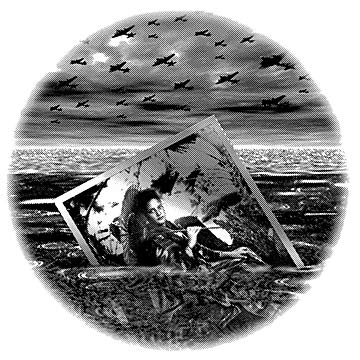
A dark thriller of
twisted history
ALTERNATIVE history is often the domain of people making the case that the world would have been better off in the long run if Napoleon or the Confederacy or Imperial Germany had won, or if World War II had played out under a different set of circumstances. No such agenda is found in Rick Blaine's tightly written counterfactual thriller about what life might have been like in Hawaii if the criminal Overthrow of 1893 had been reversed, Kaiulani had survived, and the islands had become a Japanese protectorate.
|
"Black Ocean": By Rick Blaine Pacific Monograph, paperback, 440 pages, $19.41
|
As for an agenda, Blaine is clearly on the side of those who believe that the overthrow and all that came after was for the best -- or at least better than the circumstances he describes here. The bad guys are the Imperial Japanese Army and America seems to be in the right.
Blaine writes with an extensive knowledge of key historical figures in Hawaii and in Japan's Greater East Asia Co-Prosperity Sphere. Several of them enter into the story as Japanese-American Kempeitai officer Tadashi Morimura investigates the "accidental" death of Honolulu Advertiser editor Lorrin Thurston.
Romance also figures into the action after Morimura meets the Honolulu Star-Bulletin reporter who is investigating Thurston's death. The reporter, Yay Panlilio, half-Caucasian and half-Filipino, and raised on the mainland, dislikes Morimura and his boss, Kempeitai commander John Burns, on principle, but soon she and Morimura are working together in trying to figure out who killed Thurston and why.
Their romantic relationship is a thriller genre clichˇ, but Blaine develops it in a reasonably realistic manner that seems to fit what we know of the characters.
As for the background, the Americans are waging an economic war against Japan and Hawaii, the Japanese have imposed nationalization and martial law, and rumors are circulating that the Americans may be planning to attack the Japanese naval base at Pearl Harbor. The Japanese are also engaged in some type of mysterious social engineering scheme that involves "encouraging" Native Hawaiians and others living in urban Honolulu to take up community homesteading on the Big Island.
As Morimura and Panlilio dig deeper into the Thurston case, they encounter Japanese naval heroes Isoroku Yamamoto and Minoru Genda, enigmatic Imperial Japanese Army operative Kenji Doihara, ruthless Masunobu Tsuji, and a mysterious teenage sadist named Gecko. (Doihara was one of the few top Japanese military leaders hung as a war criminal after World War II; Tsuji should have been.)
Another important character is Norihiro Yasue, one of the IJA's top "Jewish experts," and in real-life, a key player in Japan's efforts to provide refuge in Manchukuo for almost 1 million Jewish victims of Nazi persecution.
The story hangs together quite well as a mainstream action-thriller. Blaine sometimes uses the average reader's assumptions about history to slip red herrings into the narrative.
The action slows only when Blaine goes into detail describing how newspapers operated in 1941, or when Panlilio and her Star-Bulletin colleagues talk at length about journalistic ethics and the balance between reporting the news and making it.
And, although the Imperial Japanese emerge as the villains, and a couple of them are nasty types at best, it is hard to blame them for killing people who are working undercover for the Americans.
Alternative history allows authors to "bend" history as they wish, and Blaine, for the most part, does so without "bending" it past the breaking point. There are a few possible errors of fact, but the most questionable assumption he makes that is crucial to the story is in assuming the English would have allowed German passenger ships to travel unmolested from Germany to Hawaii in 1941.
Blaine separates historical fact from fiction in the final chapter and notes that it was the United States that scuttled Japan's plans to settle Jewish refugees in Manchukuo. There's no reason to believe that the English would have given German ships safe passage during World War II to save Jews from the Holocaust either.
However, anyone interested in World War II-era alternative history will find "Black Ocean" entertaining and thought provoking, even if they disagree with some of Blaine's perspectives.
[News] [Business] [Features] [Sports] [Editorial] [Do It Electric!]
[Classified Ads] [Search] [Subscribe] [Info] [Letter to Editor]
[Feedback]
